Yuck! This Horror Remake is Awful…
The worst horror remakes. In fact, throughout the history of cinema, critics and fans alike have often stated that a horror film “is so bad it’s good. You have to see it!” If you’re guilty of falling into the dud-turned-cult-classic horror movie trap, don’t worry, all is forgiven. There are millions of us! But, how is it that some of the worst (THE WORST) horror films get greenlit, then magically gain traction? They’re dissected, watched, and rewatched through a morphing cultural lens to be resurrected in time Memoriam. But they’re really, really bad. The following list of horror films is arguably a collection of bad reimaginations of the originals, or; they’re just plain insulting. Here are the 20 worst horror remakes ever. You be the judge.
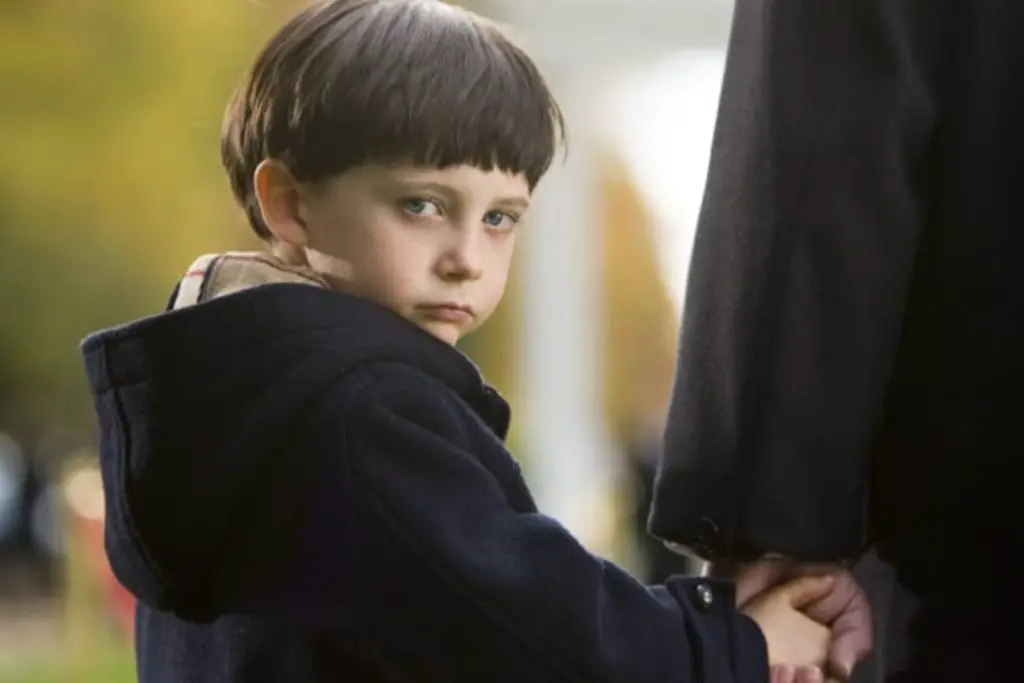
Paved with Good Intentions
#20 – The Omen (2006)
The original film is a story packed full of sinister and creepy undertones, ominous camera work, and a kick-ass, booming, operatic, Oscar-winning musical score. The foreboding Latin chanting is anxiety-inducing; the film as a whole isn’t all that memorable. But, it isn’t a cookie-cutter horror film. It is a damn fun ride to take in one sitting. Bookended with slow-burning tension from start to finish. The story follows the unraveling of a couple trying to start a family.
Their baby dies shortly after birth. Unbeknownst to the wife, the husband secretly replaces the baby boy. Unbeknownst to either of them, the child is the prophesied Antichrist. The Omen (1976) is quintessential 70s supernatural horror. The remake is a yawn fest. It is said that the road to hell is paved with good intentions, which sums up why Omen (2006) took the fast lane. Unfortunately, even though it’s inspired by “the force of a classic” behind it, even remake fever can’t hold up the profound hollowness of this style-drenched “Omen.”
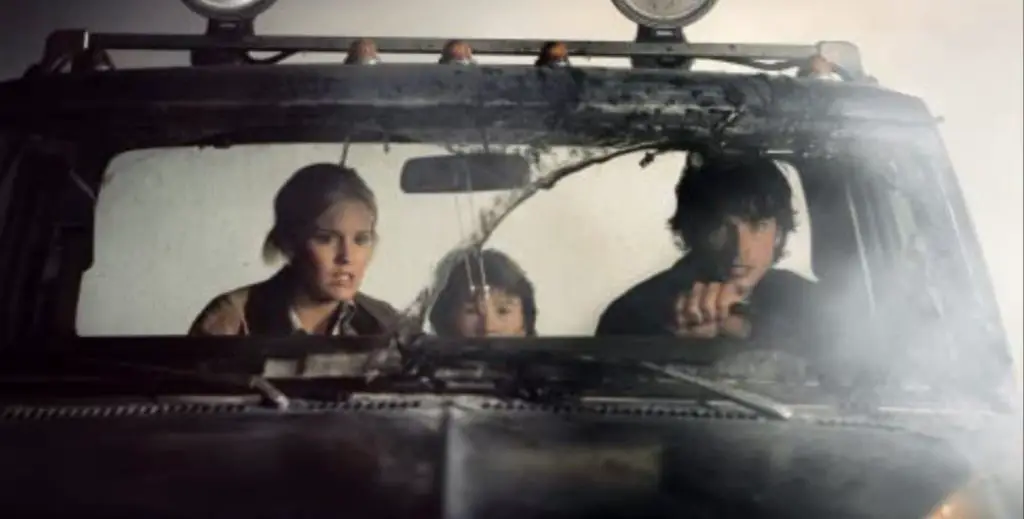
This Remake has Me in a Fog!
#19 – The Fog (2005)
Iconic describes actor Jaime Lee Curtis to a T as she flashed across the screen as vulnerable babysitter Laurie Strode in the original Halloween (1978). Curtis would go on to become horror’s original “Scream Queen,” continuing her reign as the penultimate final girl starring in Prom Night (1980), Terror Train (1980), and her re-teaming with director John Carpenter for The Fog (1980). The film is a unique twist on the zombie genre. When a ship called the Elizabeth Dane is sunk in 1880, everyone on board is killed. To avoid a leprosy colony from settling in what would become the community of Antonio Bay. The salvaged gold from the wreckage affords the building of the new town.
The thing is, the captain and his leprous crew are Remnants, and they’re pissed off. Fog is a slow-moving, opaque, and menacing claustrophobic force of nature. Within that condensed vapor in the film is a murderous pack of undead revenants. Good 80s horror should not be modernized, ever. The reimagined The Fog is not that; it lacks any trace of scares, suspense, or originality, and the characters don’t seem interested in the fact that they are targets for murder. The cheaply designed bargain-basement CGI zombie wannabes make the 50-year old animatronic figures at Disney’s iconic Pirates of the Caribbean look real.
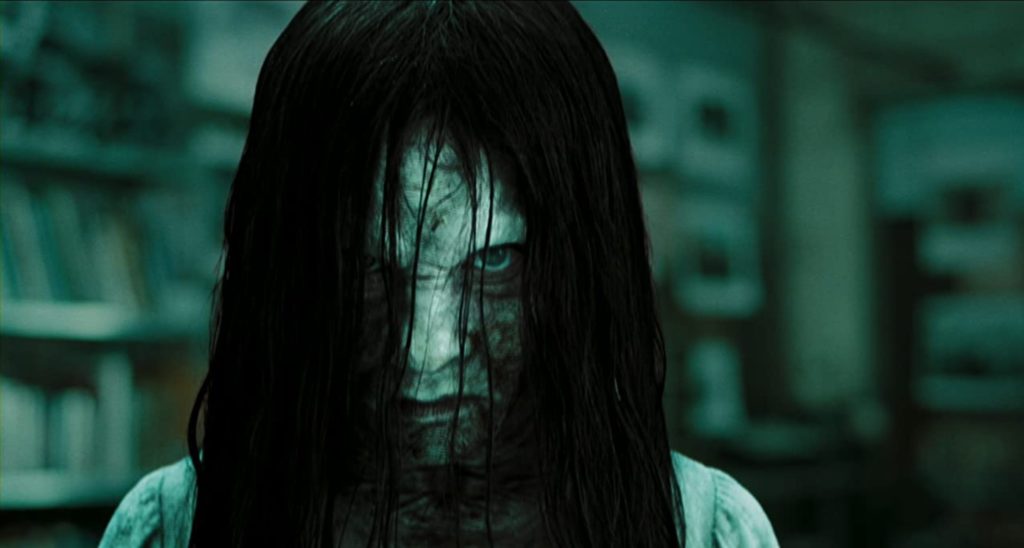
Horror Remakes Deserve Better
#18 – The Ring (2002)
Some poor girl named Samara, hated by her mother, cursed a blank videotape at Shelter Mountain Inn. The random images depict Samaras’s point of view, her tortured life, up until her planned but untimely death. The Ring is the last circle of sunlight Samara experiences while dying in a well. Anyone who watches the videotape is cursed, has a week to show it to someone else; otherwise, they will be killed by Samara’s ghost. The Ring is full of folklore and urban legend and lots of people watching the tape and dying. Aunt Rachel goes snooping after she watches the video too.
With only seven days to figure out how not to die, Rachel begins a harrowing journey to break the spell. The original film is restrained. It revitalized the J-horror movement by telling the ultimate story of “evil lying in wait beneath the surface of normality.[1]” The Ring reimagined is infused with somewhat of the same excitement. However, it also has a bewilderingly extended ending, and a tad of confusion as several essential questions go unanswered. But mostly, it’s loud, with more bore than gore.
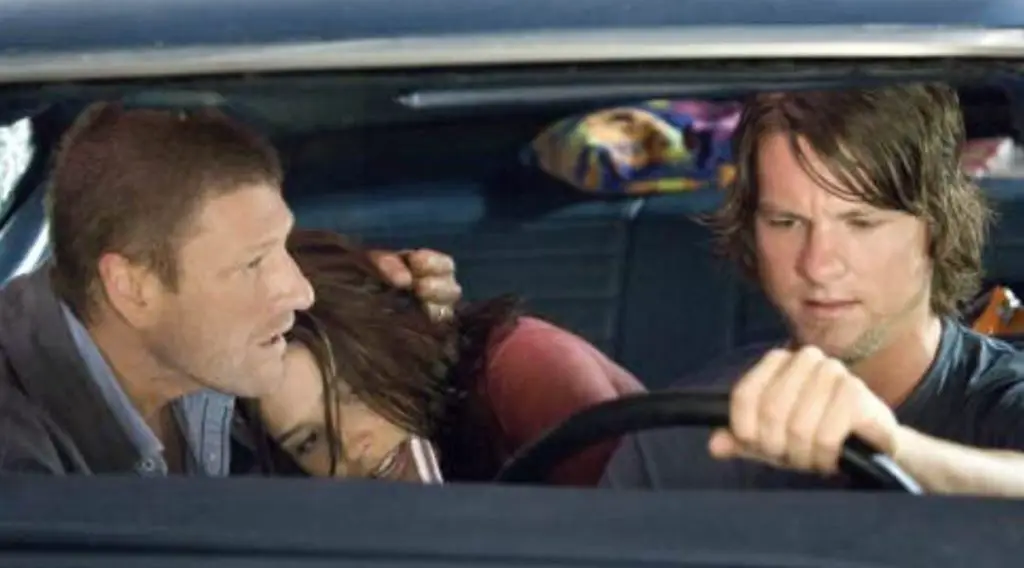
Move Along, There is Nothing to See Here
#17 – The Hitcher (2007)
As horror antagonists go, three are the most cunning and manipulative: Hannibal Lecter, American Psycho (2000), Patrick Bateman, and hitchhiking maniac and loner named John Ryder, masterfully played by Rutger Hauer in the 1986 brooding cross-country slasher spectacular The Hitcher. The film’s speed and inertia of unexpectedness make the original so fun as Ryder stalks the open roads.
Terror-on-the-highway horror doesn’t have a genre, but the original The Hitcher is the crowning glory if it did. A remake of a film near perfect, which gains a considerable cult following each decade after its release, really doesn’t need a remake. And yet, the complete disappointment that The Hitcher (2007) boils down to gratuitous gore and cheap thrills. The taut livewire tension-packed, “beautifully designed as a guillotine,[2]” inside the original never once finds its way into the remake. It isn’t even worthy of a rental at the video store.
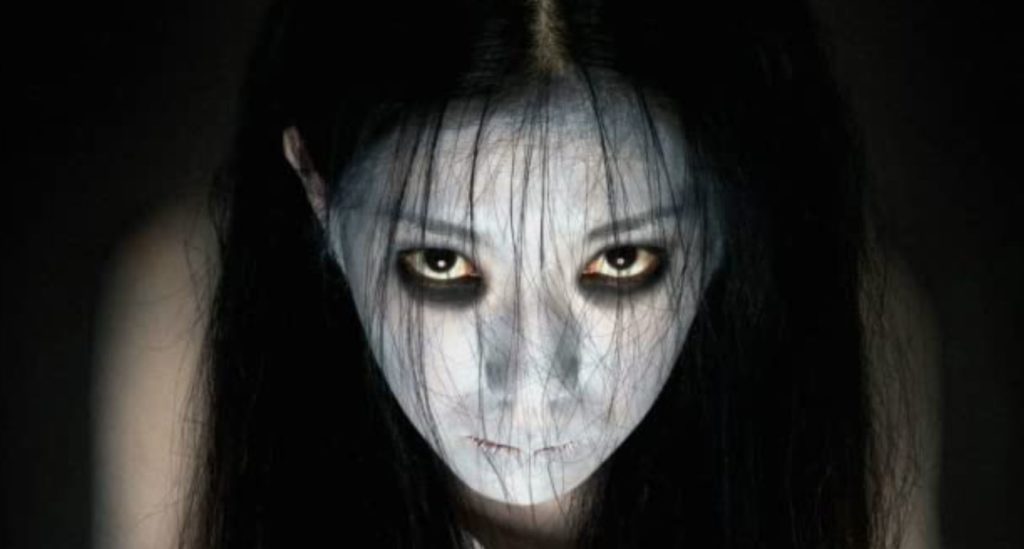
At least Commit to the Remake
#16 – The Grudge (2004)
The second J-horror entry on the top 20 worst horror remakes list is uncommitting in every way to the horror genre and is relentlessly boring. The Grudge (2002) is an American remake of Ju-On: The Grudge (2004), which in and of itself wasn’t a crowd-pleaser. But the original has one major thing going for it the remake doesn’t: continuously scary moments. It’s easy to find oneself teetering on the edge as the fragmented scenes push the film towards the last death rattle. The remake attempts to mimic the original, it should, it’s directed by Ju-On’s Takashi Shimizu.
But, ultimately, it’s awash in muddy and muted tones. It reeks of depression and foreboding and it’s as annoying as a scratchy wool turtleneck sweater. Just a haunted house movie that does unspeakable things to anyone who dares visit. If the dank musty feeling of a cold soggy day seeping deep into your bones is appealing, sit through The Grudge. And if you like cheesy and generic, there’s always the 2020 remake of The Grudge.
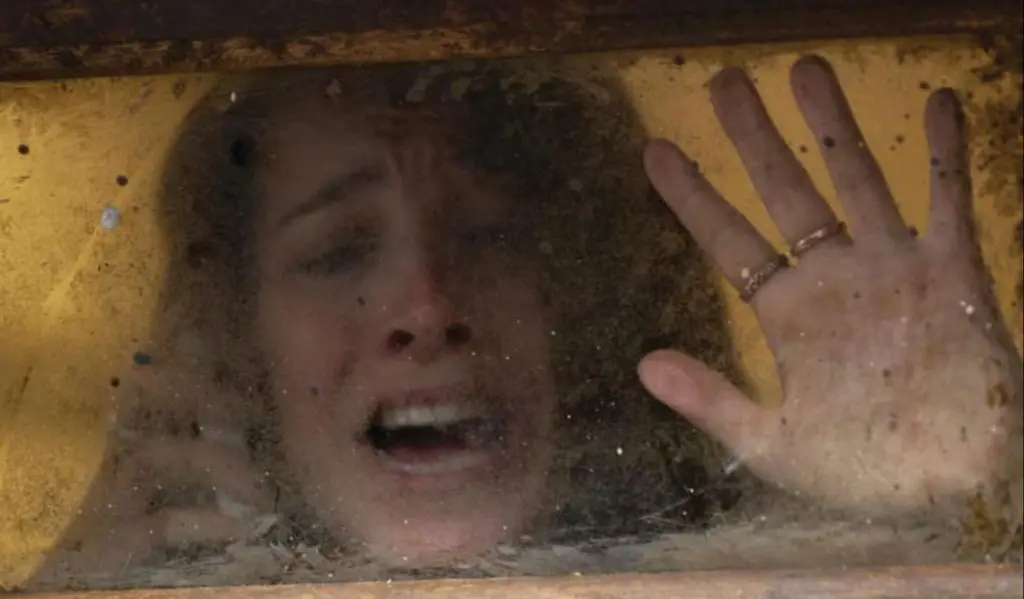
Is this Even the Same Movie?
#15 – The Last House on the Left (2009)
The neighborhood sure is nice. The movie poster said otherwise: “To avoid fainting, keep repeating, it’s only a movie, it’s only a movie.[3]” Most countries wouldn’t give The Last House on the Left a rating due to its relentless, unforgivable violence. The original 1974 film almost permanently derailed king of horror Wes Craven’s career. The remake, like the original, diverges somewhat but is basically about two girls who get trapped and horrifically beaten and murdered. The escaped convicts, in the original, responsible for the crime, turn up at one of the girl’s houses disguised as traveling businessmen. In the remake, the duo is a foursome, and the relationship between the four of them is so strained it completely uses much of the film to work through their individual grievances. Although, one of the criminals does come around in a moment of clarity.
While “staying” at the house, the mother in the original discovers the truth about her daughter’s dreadful demise. In the remake, mom finds her alive. In different states of retribution, the parents quickly plot justice for the slain girls and embark on a vengeful game of hide and seek and woodland adventures. The hunters become the hunted. What the remake lacks is the underlying current of the obvious outcome of the two girls: cruel, slow, and painful deaths. The critical consensus of the remake is that it is just “a cheap-jack movie of no real merit. Riddled with awkward, self-conscious performances.” [4]
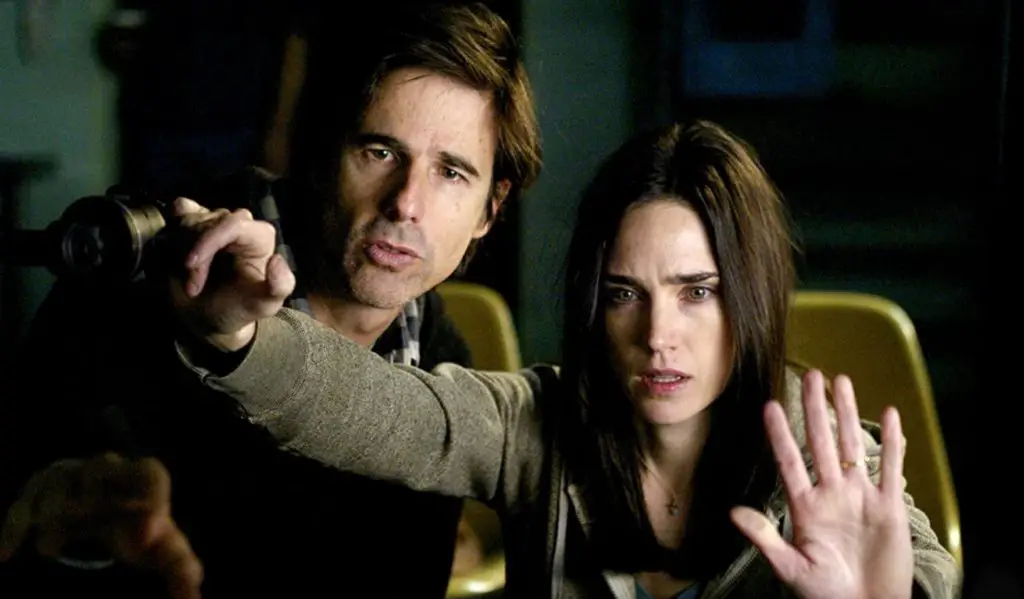
J-Horror Remakes: Missing the Pathos
#14 – Dark Water (2005)
The Japanese supernatural horror film Dark Water stirred the critics to write, “The movie’s structure delivers not just a flash of fear but a strange, sweet charge of pathos – and the combination adds up to the most disturbing spell in the cinema.[5]” A mother’s heartbreak, a custody battle, a missing child, a mysterious death, a dark secret, and the forces of evil disguised as a leak in the apartment above create a truly compelling story.
Japanese director Hideo Nakata dives into the deep end of the maternal pool, and in turn, hands the audience a captivating feeling of ethos for the central characters. But, while the atmosphere is enough to create claustrophobic fear, the retelling of the original story is ultimately just a moldy retread of The Ring. The American version’s focus on character development never fully fleshes out the story, and the film does have better lighting. In the end, though, it’s just a soaking wet mess.
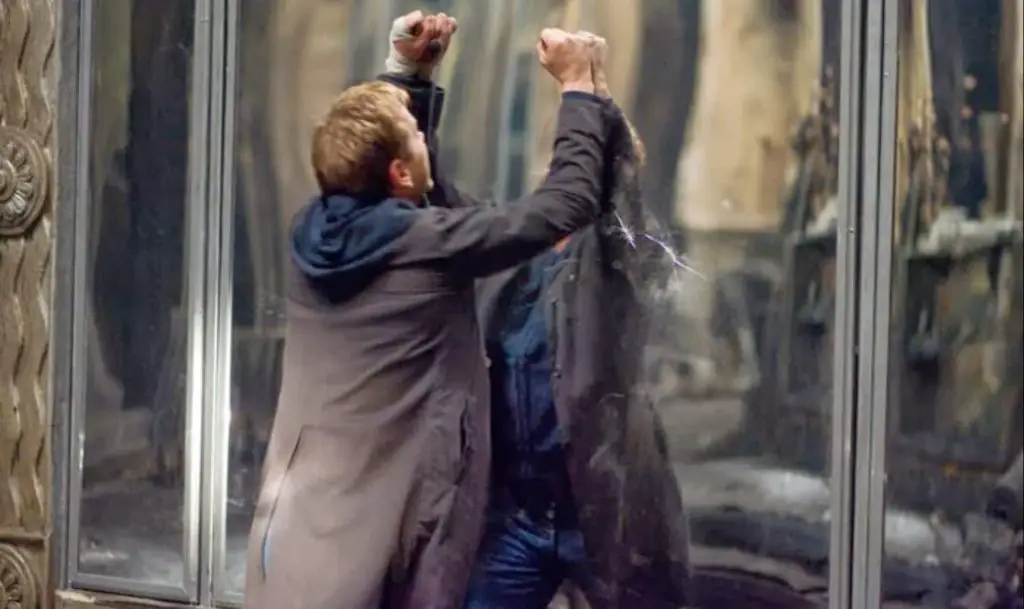
Don’t Ever Look at this Mirror
#13 – Mirrors (2008)
The good news is the original Mirrors, a South Korean film titled Into the Mirror is worth seeing. The complex story follows a troubled detective investigating gruesome and unconventional suicides people commit in the reflections of mirrors throughout a deserted shopping center. The bad news is, the entire remake of the film revolves around people seeing horrible things – mostly themselves murdering themselves in the reflection of a mirror. At every turn in Mirrors, it’s impossible to tell who is who. Who is a reflection? Who is possessed; if the reality is an alternate one or the examination of an alternate reality.
At one point, a character claims they’re “de-possessed.” Un-possessed? The whole film seems ridiculous. Lousy horror remakes usually find their way towards cult status. Not Mirrors. It’s reflective of how one wrong choice after another leads to cinematic disaster. The gore is fun though. Objects in the mirror are closer than they appear isn’t a metaphor. It’s a required safety warning engraved on passenger side mirrors of motor vehicles. It should have been printed as a warning on every ticket at the box office when audiences arrived to see Mirrors at the movie theater.
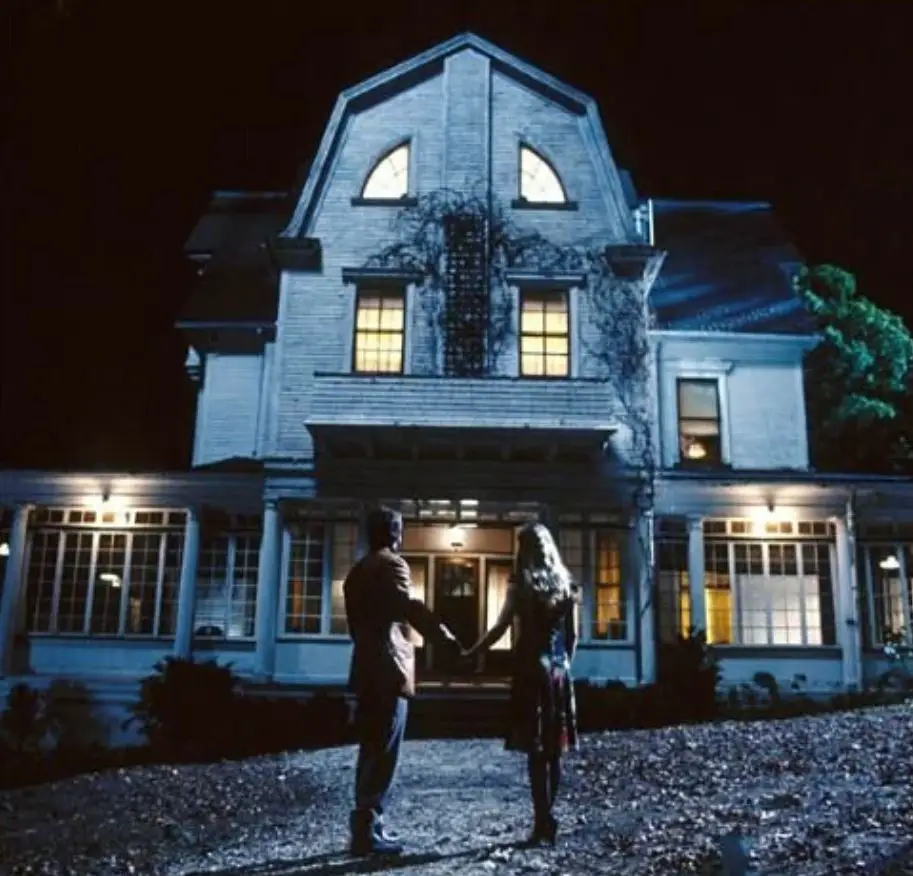
Amityville Horrible
#12 – The Amityville Horror (2005)
The original Amityville stockpiles unsettling moments. And the ambiguous storytelling, and unsettling tone, ripped from the pages of the book inspired the movie. The Others (2001), Insidious (2010), and Paranormal Activity (2007) have all loosely followed the template of the madness portrayed in the original The Amityville Horror (1979). The film exposes the agonizing undoing of a man terrorized by the spirit of the satanically possessed former homeowner who murdered his entire family.
The “cursed house” – a character itself in the original – needs a conduit. So begins the reign of terror for the Lutz family. The reimagined film is over-indulgently brimming with FX. But in the end, it’s pure drivel. The house doesn’t serve as the evil vessel of doom. Watching a crazed family run around a creaky wooden house from their ax-wielding father, and the original family’s idyllic life shown in flashbacks with really no backstory to support it, well, who cares?
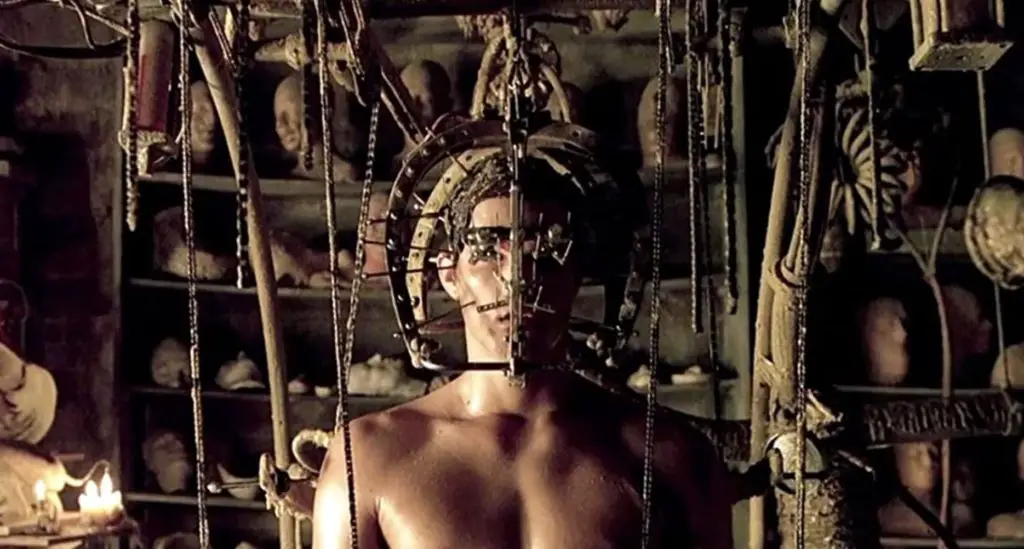
Horror Remakes That Shouldn’t See the Light of Day
#11 – House of Wax (2005)
Vincent Price, the delicious Carolyn “Morticia Addams” Jones, and badass Charles Bronson worked together on the original House of Wax (1953). The follows successful sculptor achieving greatness. He creates breathtakingly realistic historical wax figurines. His citing a lack of diversity, believing the museum requires more sensational figures, parts ways. The museum suffers a terrible fire. The burned sculptor’s hands become disfigured. Weeks later, however, people mysteriously go missing. Ironically, new wax figures appear in a newly reconstructed wax museum. House of Wax, the remake, is nowhere near the original.
Six friends stop to camp, in a creepy forest, on the way to a football game. A mysteriously “broken” fan belt finds them searching in an abandoned town called Ambrose, for a replacement. The actors aren’t concerned whatsoever about the suspicious sociopathic lone townsperson. The film is missing a real sense of originality. It feels more like a watered-down version of Wrong Turn (2003). Only the death of Paris Hilton’s character “Paige’s Death” is memorable. It’s 4:00 minutes of horror perfection. Other than that House of Wax shouldn’t have seen the light of day.
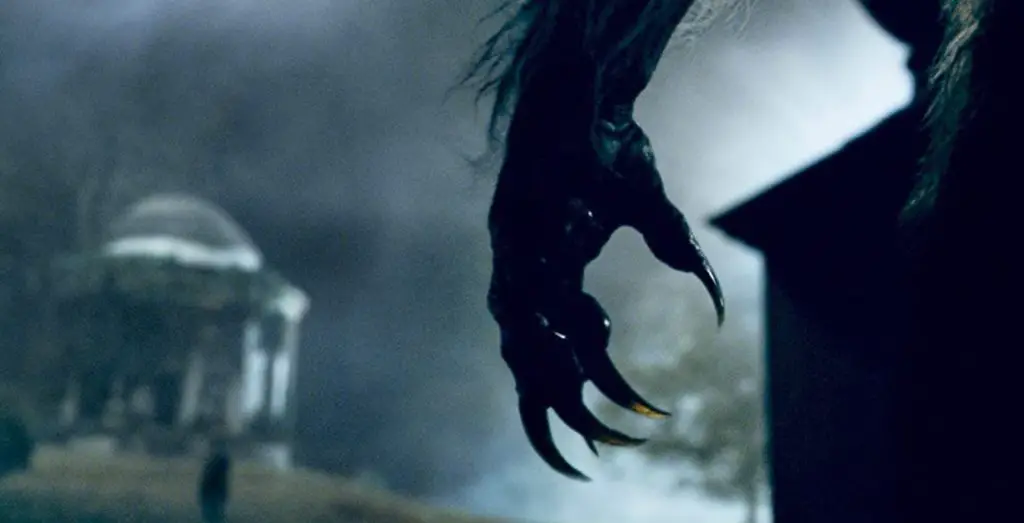
A Waste of Time, Money & Talent
#10 – The Wolfman (2010)
Seven decades might separate the original from the remake; but the plot of The Wolfman, new and old, is precisely the same. A man visits a strange new town. It is a new moon. One random night he defends a woman from a wolf attack, gets bit in the process. The woman administers first aid, tells the man the tale of the Wolfman. The man looks out the window. A waxing gibbous moon! Ominous music plays. The man visits a bar. The crowd goes silent. Wolves howl in the distance.
On the way home, a bright full moon reveals itself from behind a bank of dark clouds. Bones crack and snap. His clothes fall away, and he grows long hair, and paws. He screams in pain and howls. He must kill the townspeople. The reimagined The Wolfman boils down to bad storytelling and awful CGI FX. A significantly hokey detour from the original. The consensus to make the new classic should have been to earn the review of the original film – “a handsomely told tale with affecting performances” – or just let the sleeping dog lie.
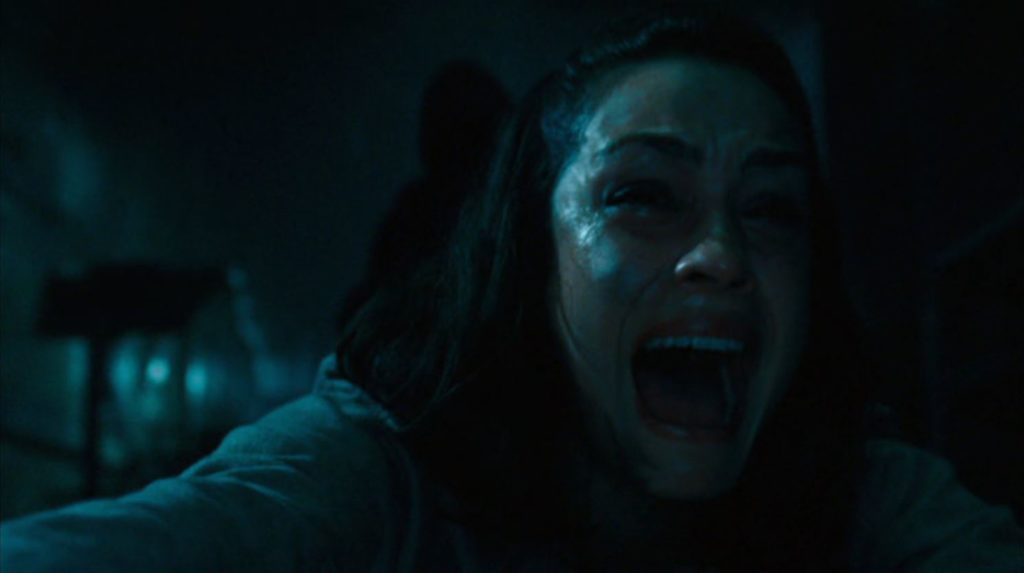
This Horror Seems Oddly Familiar
#9 – One Missed Call (2008)
Sadly, technology serves as a metaphor and the villain of this waste of a horror remake. A cell phone leaves voicemails three days in the future. The message is a recording of the phone’s owner dying a tragic death. A red candy rises from the throats of the victims and pops out of their mouths as they take their last breath. The kills in One Missed Call fall short of anything scary.
Critics had no advanced screening. Thinking they were seeing a remake of the original J-horror from 2003. A film “director Takashi Miike stages with dread-soaked visual flair and allows you to enjoy being manipulated.[6]” Instead, they witnessed a rehash of Scream, Final Destination, and The Ring. A story with semi-good intentions wrapped around a thinly veiled “promise to scare and shock” via every other horror film’s story arc. This is one movie worth missing.
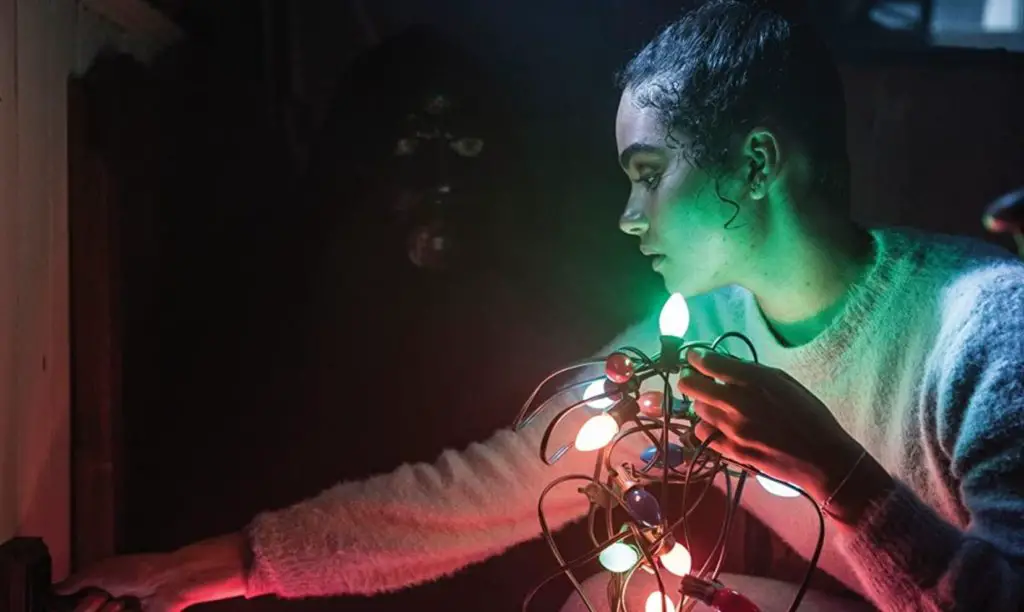
Horror Remakes and Unoriginality
#8 – Black Christmas (2019)
It is pretty unoriginal of any movie studio to allow for a remake (1974) of a remake (2006) of a remake (2019). The original Black Christmas film is actually so good it stands the test of time. Released four years before Halloween (1978), the chilly environment and the freakishly decadent kills are pretty cutting edge. Possibly one of the best horror films ever made! A sorority house with a handful of sisters celebrating the holidays sets the stage. A vengeful killer making obscene phone calls and picking off the merrymakers one by one. The unexpected and ambiguous ending is what makes the original film so good.
Then, along comes the retreads. Black Christmas (2006) is a tender throwback, and semi-white knuckles it’s way through with some bonafide kills and jumpscares. The homage to Halloween is sweet, so, look for the Easter eggs. The 2019 version is a mess. Righteous feminist, baseball-bat-swinging-politically-opinionated-sorority girls who ain’t takin’ no heat from a deranged psychopath. The characters make it perfectly clear: “this generation’s young women aren’t willing to become hapless victims as they mount a fight to the finish.” Otherwise, it’s all Ho-Ho-Humbug.
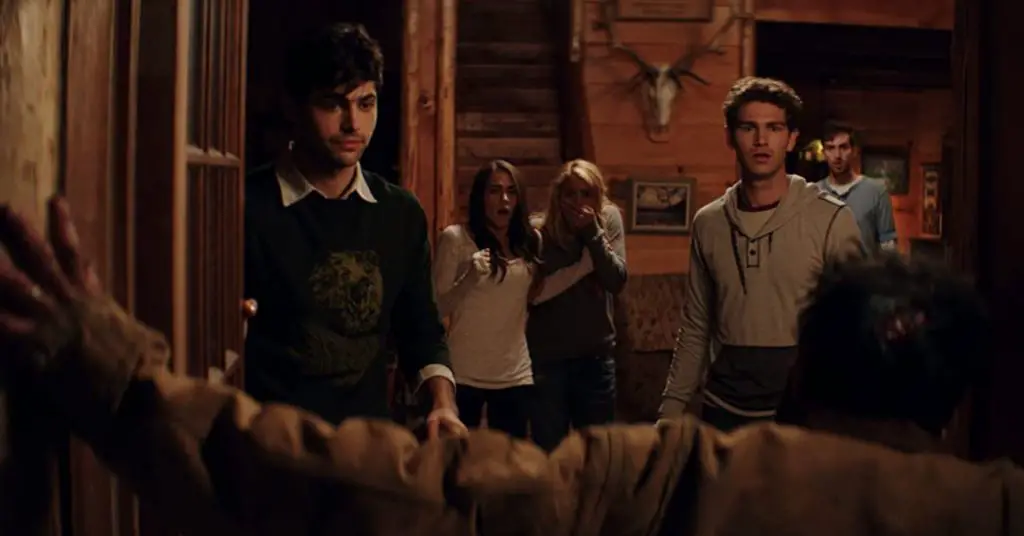
A Horror Remake Paint-by-Number
#7 – Cabin Fever (2016)
Not to be confused with Cabin in the Woods (2012) – a phenomenal horror film – the original Cabin Fever is a fun, enjoyable, gore-fest. What starts as a weekend of college graduates smoking pot, drinking beer, and engaging in a heavy dose of sexy time ends up being devoured alive by a vicious flesh-eating virus. Director Eli Roth’s original puke-inducing film focuses heavily on observing the tight-knit friendships degrading throughout the film.
The parallel themes of being trapped in a cabin, in the middle of the woods, and being psychologically trapped by fear are palpable. Realizing the fate of humanity makes the ending of the film more terrifying than the gore that comes before it. The reimagined ‘Cabin’ is a paint-by-numbers, highly-unoriginal, not-even-trying-to-resemble good horror. More slick and unpredictable bits of shock would have served the remade film well. The key to the original film’s success was literally personifying the phrase “it’s in the water.” The remake used “dead in the water” instead – and it is.
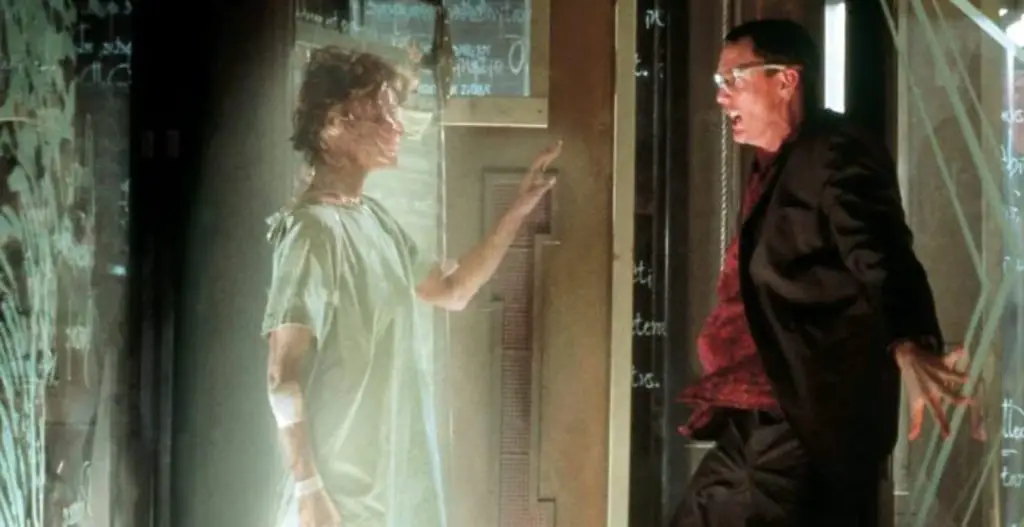
Horror Remakes – The Boring & The Bad
#6 – Thir13en Ghosts (2001)
In Thir13en Ghosts, an occultist wills a large estate to his impoverished nephew. Upon moving in, they discover the house conceals a hidden fortune, plus a haunting by 12 ghosts. The only way to see the ghosts is by way of a set of special goggles. The family must band together to find a thirteenth ghost that can free the other twelve and return the house to normal. The worst part about the remake of Thirteen Ghosts is watching it.
A sense of uneasiness permeates the film. The acting is so bad, so annoying, and so over-the-top. It’s no wonder why the marketing department promoted the film as a comedy. Or made at all. Why then remake the film Thirteen Ghosts? Burning question. The best parts of the film are the actual ghosts and one fantastic kill. Suppose the studio spent 100% of the money on the monster concepts and creation and the perfect makeup. It’s understandable, then, why the rest of the film is so terrible. The kill, aka the “sliding glass door,” scene occurs at 35:40, and it’s primo jumpscare gore!
The Horror Remake Wannabe
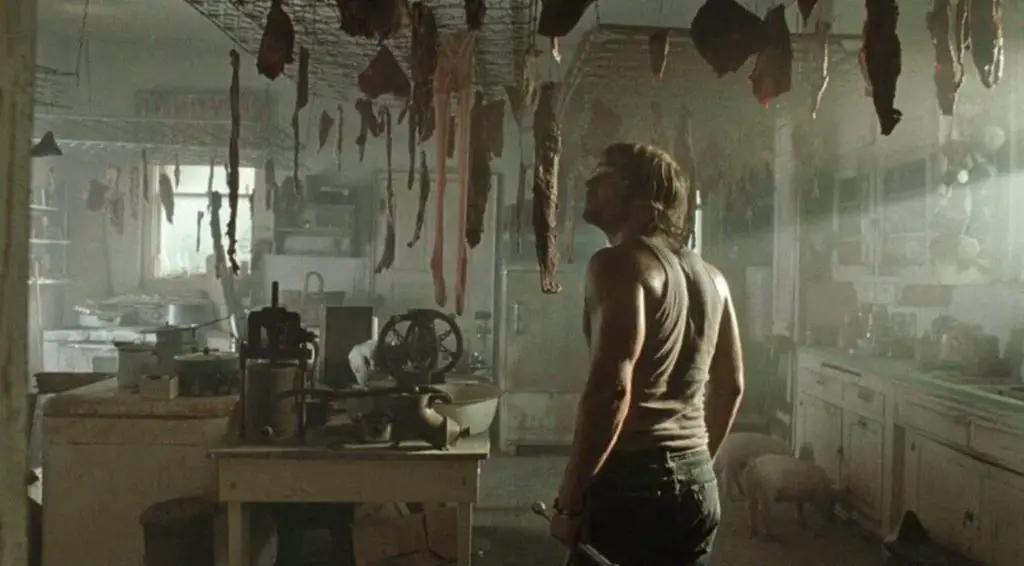
#5 – The Texas Chainsaw Massacre (2003)
About a decade before unseen forces terrorized the Freeling family in Poltergeist (1982), director Tobe Hooper conceived a freakish chainsaw-wielding, human-skin-mask-wearing psychopath aptly named Leatherface. The Texas Chainsaw Massacre (2003) wasn’t much to see. After learning of the robbed bodies of their deceased family members, a brother and sister visit a graveyard with a few friends. Upon leaving the cemetery, they decide to visit the home where they grew up, picking up a hitchhiker along the way. His oddly violent behavior gets him kicked to the curb, and then the car runs out of gas!
They detour to a swimming hole and happen upon a house. There is no gasoline. Just plenty of murderous hammers, meathooks, and that infamous chainsaw-loving Leatherface. The remake of “Massacre” has excellent intentions but diverts sharply from the original film’s sense of realism. It feels forced. Stand here, Look Scared. Scream, Die. Repeat. Sadly, the jolts of panic that fuel the jumpscares never arrive, ultimately exposing a wannabe horror remake that runs out of gas 10 minutes after the opening credits stop rolling.
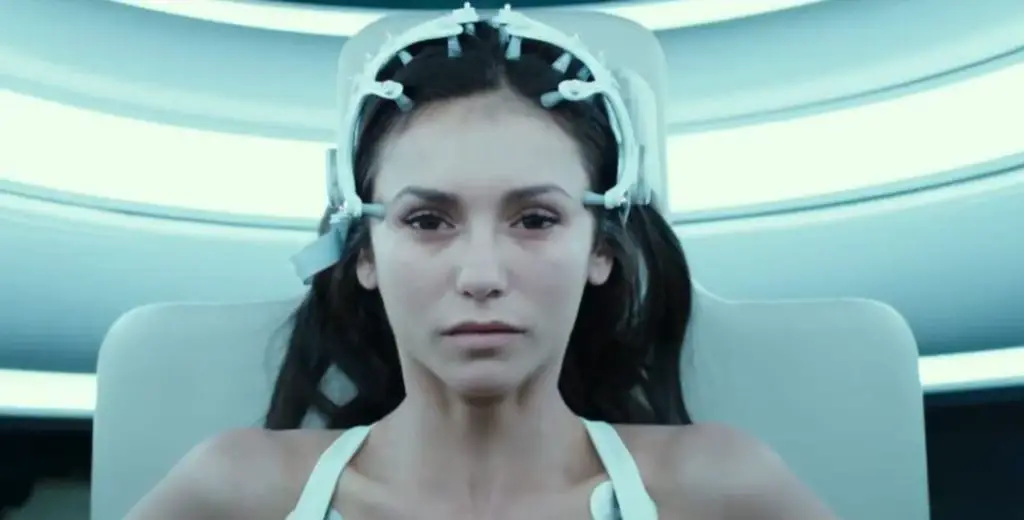
Horror Remakes – Dead On Arrival
#4 – Flatliners (2017)
Imagine voluntarily dying. Temporarily suspended between real-time and “the other side.” A group of med students accept a dare; to take each other to a heart-stopping, flatline near-death experience. Some learn to make amends and heal from trauma in the afterlife, while others discover cathartic forgiveness. Just before dying, they resuscitate each other back to life. Within days, lines blur between reality and the great beyond, causing the friends to regret their covert medical experience.
The original Flatliners (1990) is lush, extravagantly lit with sweeping, dramatic, thematic scenes filled with pain, longing, and unease. It didn’t hurt that it starred a gaggle of Brat Pack alumni. The remake of Flatliners, initially considered a “sequel,” is upon closer inspection “a melodramatic gothic self-help drama.” Instead of grabbing the original by the horns and paving the way for a supernatural horror franchise. It opened to a deadly 4% approval rating and was essentially DOA on opening night.
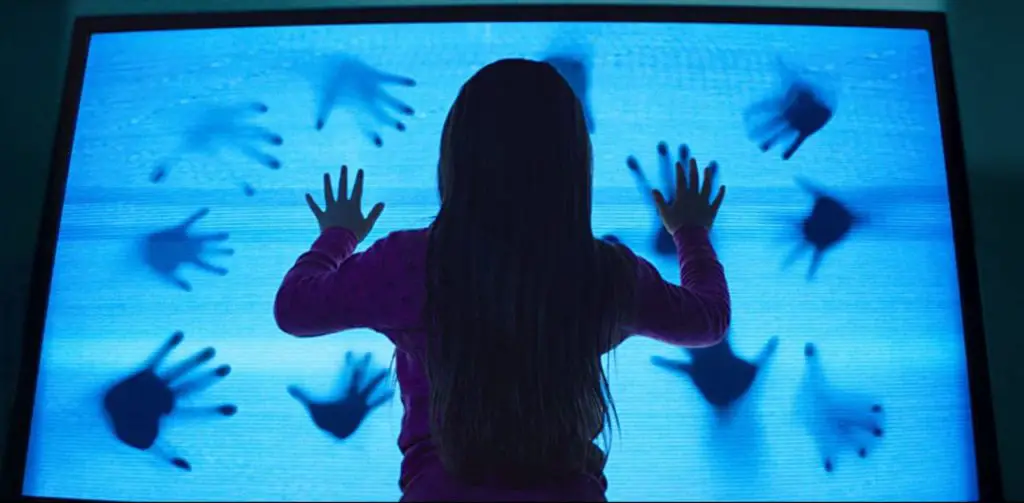
Run for the Exit Doors, Carole Anne
#3 – Poltergeist (2015)
Director Tobe Hooper’s crowning achievement in his long and storied run of horror films is the brilliantly touching and magnificently scary story of a home invasion of sorts. The Freeling family moves into the idyllic planned community of Cuesta Verde. The house comes complete with, but not limited to, a vengeful apparition hellbent on using the youngest daughter Carole Anne as a conduit. To prevent the poor dead souls – buried under their house – from crossing over into eternity.
As much as the film is supernatural horror, it’s also the remarkable story of a family’s love and strength against all odds when faced with the task of fighting a wicked unwanted houseguest. Both films are bookended with suspense, sarcasm, irony, phenomenal FX, and a freakish toy clown. The former moves at a steadily frightening pace, never once veering off course. Of the latter, which is a loud mess, with too many characters, zero backstory, and a focus on CGI scares. Of the film, Bilge Ebiri wrote in New York magazine: “This new Poltergeist isn’t anything special… but it’s not a travesty. It feels like cause, though, for a very brief celebration.”
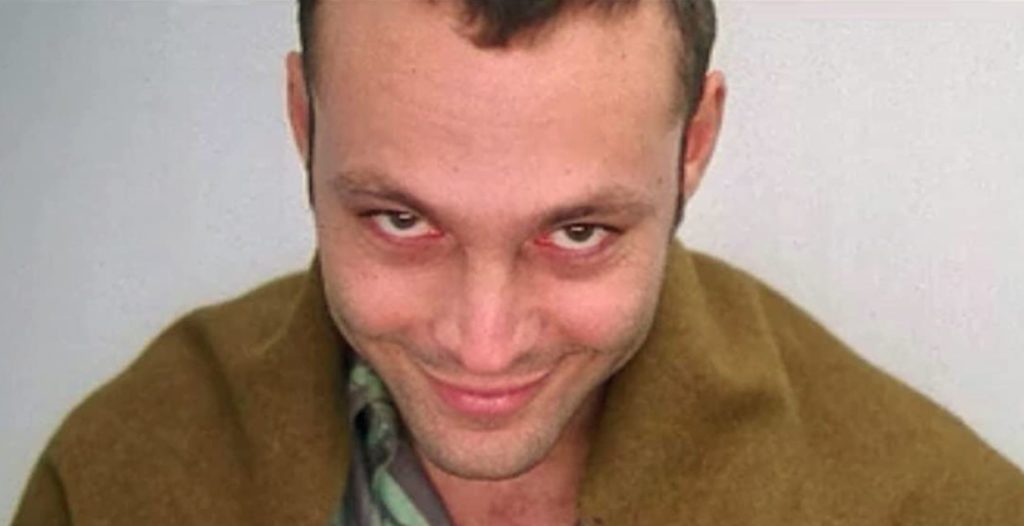
The Director that Rolled Over in His Grave
#2 – Psycho (1998)
The looming mysteries that swirled around Alfred Hitchcock’s masterpiece Psycho (1960) included a first-of-its-kind marketing campaign, including a completely different trailer to trick audiences. None of the main cast gave interviews. No one was allowed entry to the theater after the film started. Psycho opened in limited release creating long box office queues. Psycho is a horror template that has been studied for decades. Then, director Gus Van Zant remade it, frame-by-frame.
Fans and critics loathed it. Film directors loved the experimental nature. The truth is, the original Psycho is so ingrained in the mind. The remake leaves absolutely nothing to the imagination. Marion steals the money, hits the road, checks in at the motel, takes a shower, and bada-bing-bada-boom. Hey, who put mother’s corpse in the cellar? The other exciting thing about the original Psycho is that it’s filmed in black and white. Hitchcock used plenty of shadow play to enhance the story; eliminating the distraction of bloody colors. The remake is awash in color and predictability. Honestly, it doesn’t do anything for taking a shower either, like the original 3-minute scene that “changed the heartbeat of the world.”
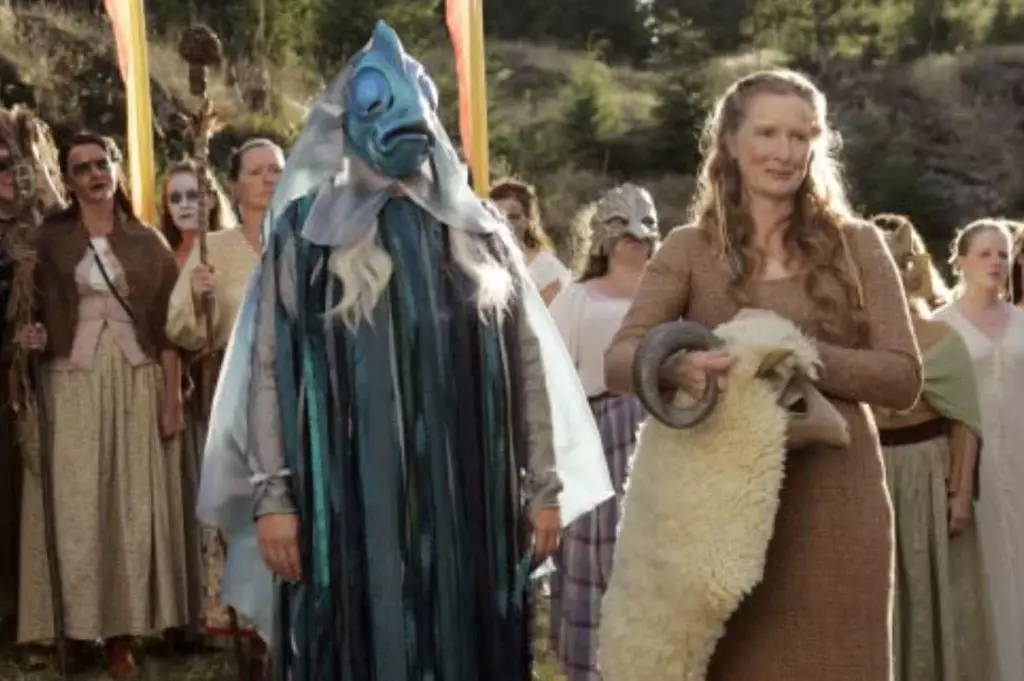
No Horror Remake will Ever be THIS Bad
#1 – The Wicker Man (2006)
Of the original, critics wrote, “a delightful piece of hokum, thoroughly well researched, performed and directed. For sheer imagination and near-terror, [horror] has seldom been equaled.” Finding the reason why The Wicker Man is a remake is like looking for a needle in a 100-foot haystack. Or in the film’s case, a 100-foot meaningless man statue made of wicker, hence the name. Actually, look hard enough and you’ll find more than one needle.
- The Razzie Awards nominated The Wicker Man for Worst Picture, Worst Actor, Worst Screenplay, and Worst Remake or Rip-off.
- Stinker Bad Movie Awards honored the film with the worst horror remake ever.
- The film, described simply as “a horror,” attaches itself to no distinct genre.
- It’s famous for some of the most popular memes: Google “Wicker Man Toast” and “Nicholas Caged.”
After a policeman’s daughter goes missing, his search lands him smack in the middle of a honey farm that only raises female bees. There is a lot of weirdness and running around, shouting, and female-dominant cultish behavior. In the world of cinema, no remake has been finger-wagged as much as The Wicker Man. Horror remakes, often imitated, never duplicated. Director Neil LaBonte didn’t get the memo. And obviously, he didn’t watch the original film or read the novel. Wicker fails at every level.
The Worst of the Worst, and You Can’t Look Away!
Ode to the horror remake! When it works, that is. Is it fair to point the finger of blame at a director whose heart was in the right place? Who thought they were paying homage to the original film, only discovering that the entire process was a disservice. The intention to “recreate a classic” horror film or inspire a new generation of fans in this top 20 list shows no glimmers of hope. Yet, it must be mentioned that tucked away within each of these 20 reimagined films, there is just enough “originality.” A horror remake is worthy of at least one viewing. However, we suggest starting with and enjoying the original so as not to be completely stunned and dismayed that so much time and attention produces such futile results.
[1] “Crazy About Psycho | White City Cinema.” 17 Sep. 2010, https://whitecitycinema.com/2010/09/17/crazy-about-psycho/. Accessed 8 Oct. 2021.
[2] “The Hitcher (1986) Reviews – Metacritic.” https://www.metacritic.com/movie/the-hitcher-1986. Accessed 8 Oct. 2021.
[3] “The Best Horror Movie Taglines – LiveAbout.” 19 Nov. 2018, https://www.liveabout.com/best-horror-movie-taglines-1873280. Accessed 8 Oct. 2021.
[4] “the original last house on the left.” http://instruction.nanoinversiones.com/susan-walters-ldxahy/the-original-last-house-on-the-left-fdb886. Accessed 8 Oct. 2021.
[5] Bradshaw, Peter (5 June 2003). “Dark Water”. The Guardian. Retrieved 23 July 2019.
[6] Stevens, Dana (2005-04-22). “Film In Review: ‘One Missed Call'”. The New York Times. Retrieved 2021-07-10.
